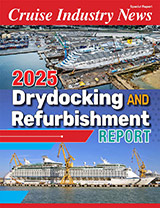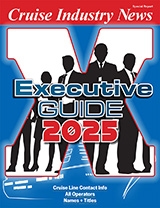The National Transportation Safety Board has determined that the probable cause of the grounding of the Empress of the North was the failure of the officer of the watch and the helmsman to navigate the turn at Rocky Island, which resulted from the master’s decision to assign an inexperienced, newly licensed junior third mate to the bridge watch from midnight to 4:00 a.m. The third mate was not familiar with the route, the vessel’s handling characteristics, or the equipment on the vessel’s bridge.
“The flawed decision making in this accident created the potential for a catastrophic disaster,” said NTSB Chairman Mark V. Rosenker. “Those in leadership positions need to make sure they consider every option possible when making critical decisions that could put lives at risk.”
On May 14, 2007, the 300-foot passenger vessel Empress of the North, operated by Majestic America Line, grounded on a charted rock at the intersection of Lynn Canal and Icy Strait in southeastern Alaska, about 20 miles southwest of Juneau. The vessel was negotiating a turn west out of Lynn Canal into Icy Strait on its way to Glacier Bay, the next stop on a 7-day cruise, carrying 206 passengers and 75 crewmembers. The vessel struck the rock, known as Rocky Island, which was illuminated by a flashing green navigation light.
Passengers and crewmembers were evacuated safely without injuries. The vessel sustained damage to its starboard underside and propulsion system.
In the report adopted yesterday, the Board noted that because of the senior third mate’s illness, the master replaced him with the new junior third mate for the midnight-to-4:00 a.m. watch. The third mate held an unlimited, any-ocean third officer’s license but had never before stood watch on the vessel or traveled the waters of Lynn Canal.
The master had ample time to consider the watchkeeping assignment, the Board stated. However, the Safety Board investigators found no evidence that the master considered other options and did little to prepare the junior third mate for his first underway watch.
The third mate lacked any knowledge of the route and should not have been left to make this critical maneuver on his own, the Board said. The Safety Board concluded that the master jeopardized the vessel’s safety by allowing the third mate to stand a bridge watch before he was familiar with the route and the bridge equipment.
As a result of its investigation of this accident, the Safety Board recommended that state and U. S. maritime academies use the circumstances of the accident to teach students about their responsibilities as newly licensed officers. The Safety Board also recommended that the Passenger Vessel Association inform its members about the circumstances of the accident.
A synopsis of the Board’s report, including the probable cause and recommendations, is available on the NTSB’s website, www.ntsb.gov, under “Board Meetings.” The Board’s full report will be available on the website in several weeks.



